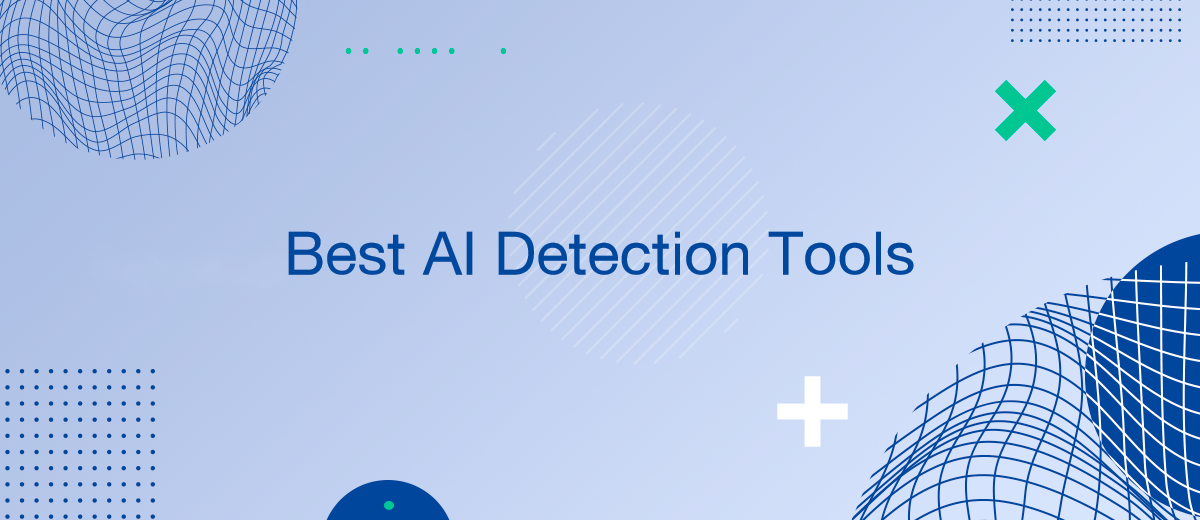The rapid spread of generative neural networks and their active use for creating content has made testing the latter for “humanity” extremely relevant. In response to such an urgent request, special programs began to appear that check texts for the involvement of artificial intelligence in working on them. In our article, we will tell you do AI detection tools work and which of them are most in demand today.
How Does AI Detection Software Work and How Reliable is It?
AI detectors are programs for checking text that can be used to determine whether it was written using artificial intelligence (in whole or in part). As generative neural networks develop and improve, such services are becoming increasingly in demand. As a rule, these systems do a good job of recognizing classic AI content, especially in the case of long texts. However, they can make a mistake at any time by mistaking human-written text for generated text. Services often fail when analyzing paraphrased text that was created by a neural network and then rewritten by a human. Independent studies have shown that the reliability of the detectors is still far from ideal. According to statistics, for the best paid programs in this segment it is 85-90%, while free systems provide no more than 65–70% accuracy. That is why you should not blindly trust such systems. It’s better to find out right away are AI detection tools accurate, and if so, how accurate they are.
To recognize generated texts, services use a number of methods for analyzing them:
- Statistical. To assess the likelihood of text being created using AI, a number of statistical indicators are used (word frequency, complexity, presence of certain phrases, and so on). Typically, such materials are written in more complex language and are less readable.
- Semantic. This method involves learning the semantics of a text based on topic modeling, sentiment analysis, or coherence assessment. AI content is usually less consistent and contains more errors compared to human texts.
- Stylometric. AI detectors examine the stylometric characteristics of the text: vocabulary size, readability, sentence length, and others. This allows you to determine the originality of the text style and draw a conclusion about its authorship.
Some systems cope better with the task of checking text for non-human origin, while others do it worse. Of course, you will be more interested in the first ones. To find out what is the best AI detection tool, we invite you to familiarize yourself with 7 AI detectors that have proven themselves to be the best and have received many positive reviews.
Winston AI
A specialized platform for detecting generated texts and plagiarism, Winston AI is rightfully considered one of the best AI detection tools. Its algorithms effectively recognize text content created by different neural networks: ChatGPT, Claude, and more. This system is ideal for webmasters, editors, publishers, teachers, scientists, authors, and other professionals.
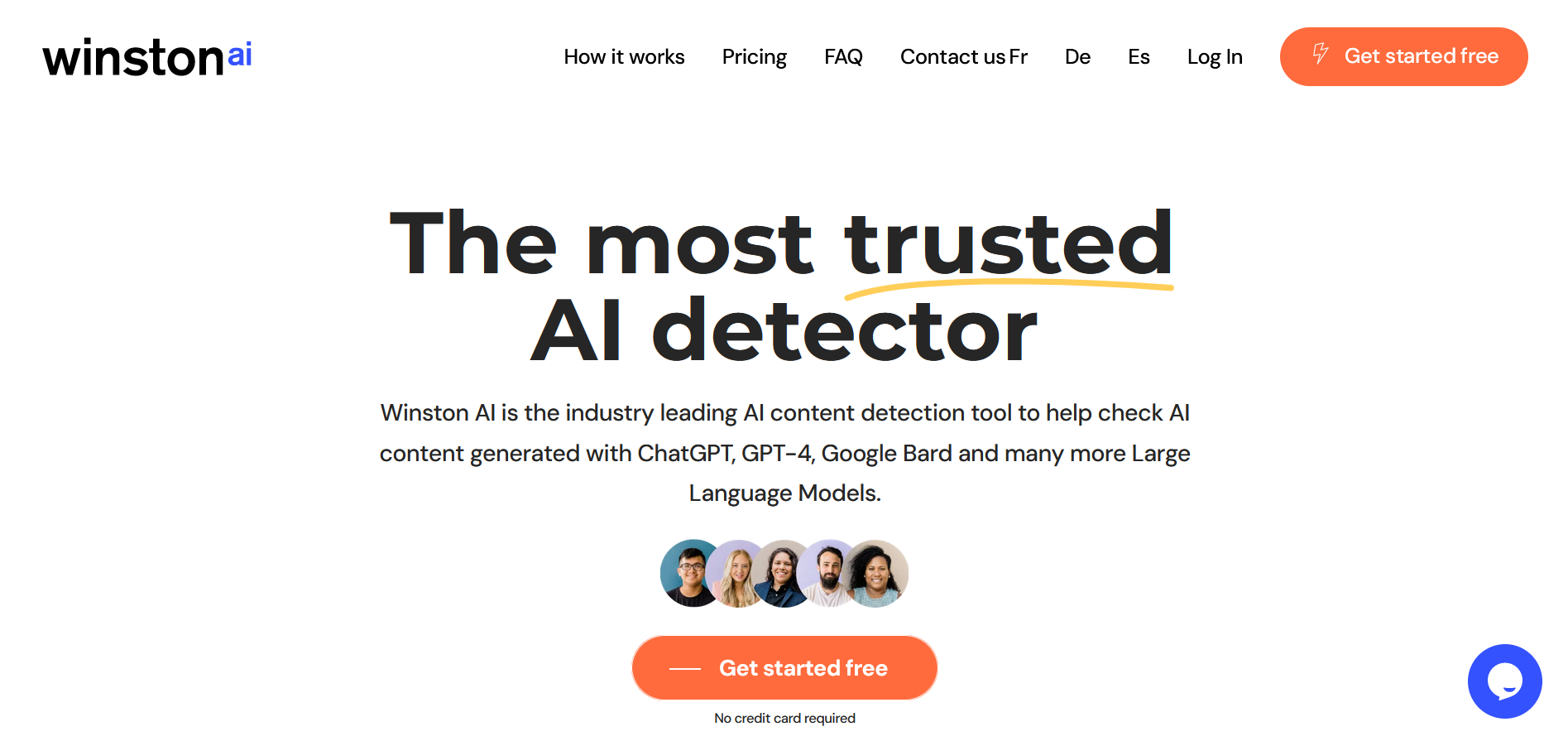
Key features:
- Winston AI provides the test result in the form of informative graphs with numerical evaluation parameters. One of them reflects readability, and the second reflects plagiarism.
- The service performs line-by-line analysis of the text and marks each sentence with one color or another. Red indicates “most likely AI-generated text,” yellow indicates “possibly AI-generated text,” and green indicates “most likely human-written text.”
- The built-in plagiarism detector helps to perform a comprehensive text check for both signs of AI participation and the copying of other people's materials without changes.
- Optical character recognition (OCR) technology, supported by Winston AI, allows you to recognize and analyze text in photos and scanned images.
- The service provides users with text and graphic reports that can be downloaded. Additionally, it supports downloading source files in different formats (DOC, PDF, and others).
Winston AI can be classified as a free AI detection tool as the service offers a no-payment plan with a 2000-word limit. There are only two paid tariff plans:
- Essential (up to 80,000 words) – $12 per month.
- Advanced (up to 200,000 words) – $19 per month.
The indicated prices are valid subject to payment for the year immediately. If you pay monthly, the cost will be higher. Each plan comes with a 7-day free trial.
Copyleaks
Copyleaks is one of the popular AI detection tools that uses AI and ML algorithms to scan texts for paraphrasing, content manipulation, and plagiarism. This universal service can be used in business, science, education, and many other areas.
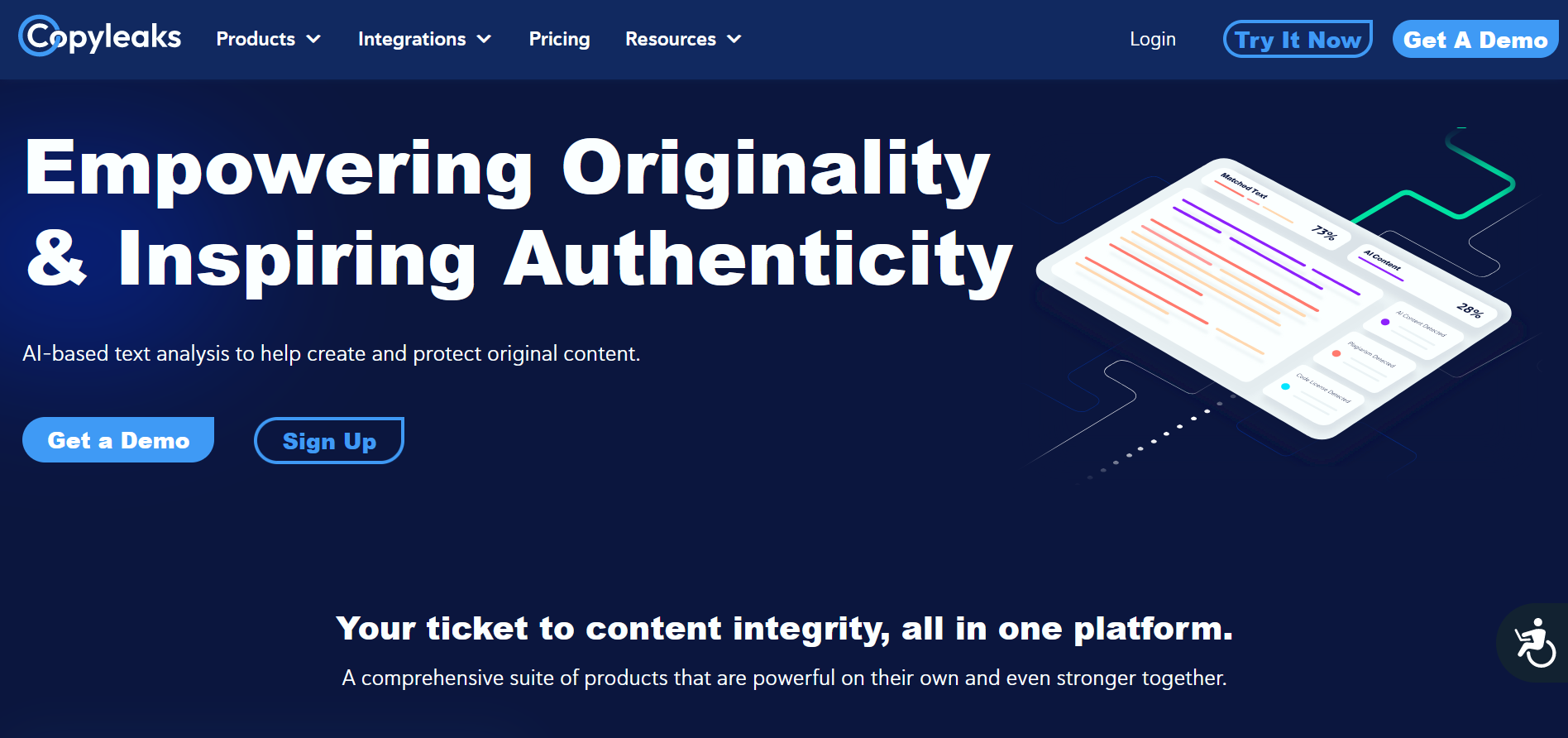
Key features:
- A simple and clear interface will not force users to delve into settings or wait a long time for results. You just need to enter or paste the text to check into the appropriate window. Its comprehensive assessment will appear in a few seconds.
- The function of quickly checking a text for plagiarism allows you to find out how unique it is in percentage terms. Unfortunately, it cannot yet be used in the same window as the AI detector. The originality check must be run separately.
- The browser extension of this service makes it possible to check texts for AI involvement and human plagiarism directly on websites online. With it, you don't have to copy and paste content manually.
- Copyleaks supports integration with third-party sites and applications via API. In addition, the platform easily integrates with learning management systems (LMS). With their help, you will be able to automate mass text analysis.
- Users can check texts in 100+ languages, including English, Chinese, Arabic, Japanese, German, and Greek.
The service offers 4 tariff plans:
- AI Content Detector – $7.99 per month.
- Plagiarism Detector – $8.99 per month.
- AI + Plagiarism Detection – $13.99 per month.
- Enterprise and LMS – the cost is calculated individually and is available upon request.
For these amounts, the user is issued 1200 credits (1 credit is equal to 250 words). It is possible to take out a larger number of credits (from 3,000 to 120,000), but in this case, the plans will become more expensive. For example, for 3000 credits, their cost will be $11.99, $20.99, and $25.99 respectively. In addition, the indicated prices are valid subject to payment for the year at once. If you pay monthly, the cost of each plan will increase.
Content at Scale
The Content at Scale platform is one of the best AI detection tools available today. It is in demand not only as a detector of AI-created content, but also for generating high-quality texts that supposedly go unrecognized by detectors.
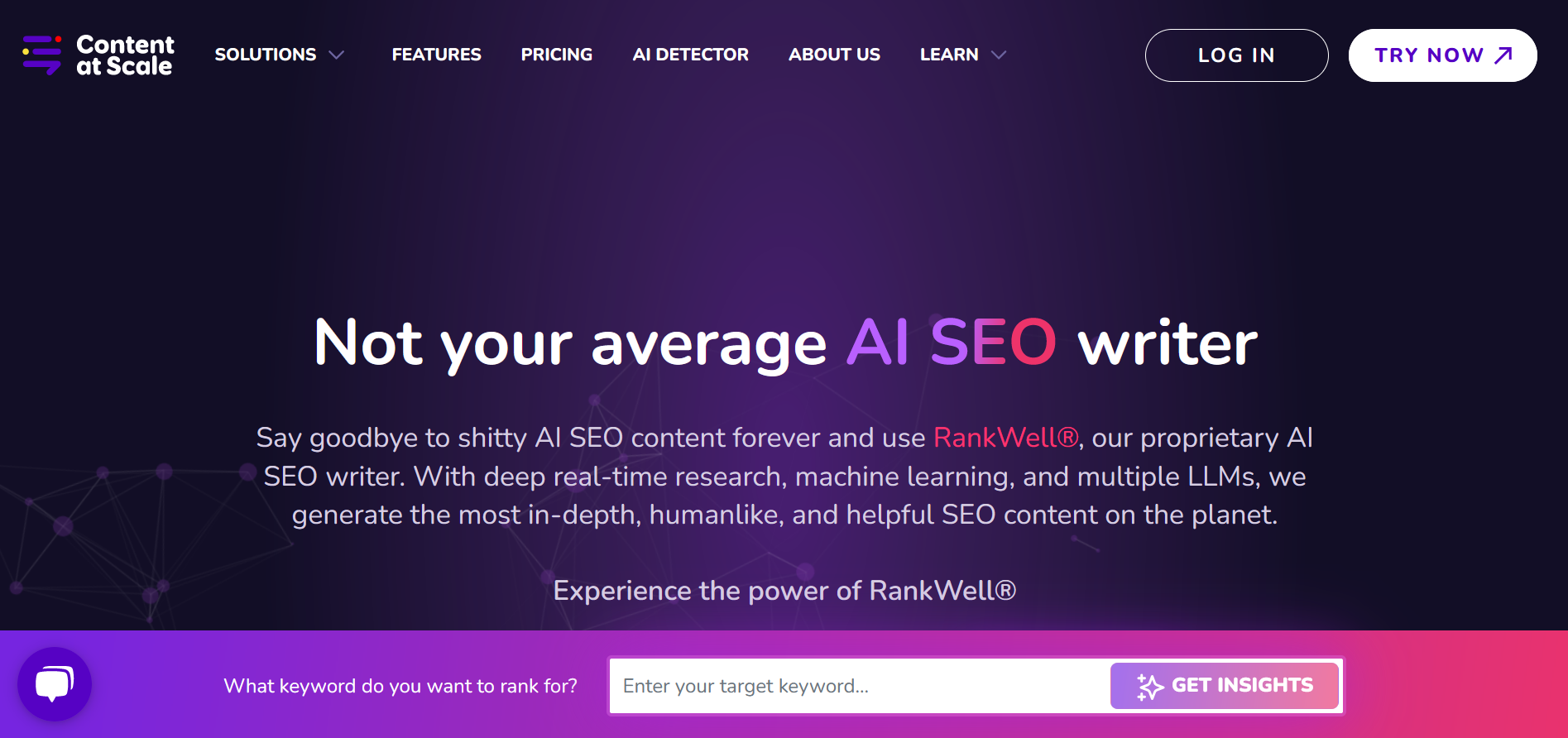
Key features:
- The platform’s algorithms determine with 98% accuracy who the author of the text belongs to: a person or the ChatGPT, Claude, and Gemini neural networks.
- Users can check up to 2500 characters at a time.
- The service uses natural language processing technology and trained artificial intelligence models to detect patterns, analyze likely word choices, and understand sentence structure.
- A large array of data was “fed” to this platform as training material. It contained text from blogs, Wikipedia articles, essays, and other web content. In addition, its developers used several large language models (LLMs).
- The Content at Scale rating system assigns text it examines to one of three categories (“yes,” “no,” and “maybe”), color-coding sentences accordingly.
- The platform gives an overall assessment of the content as a percentage and visualizes the result in the form of a graphic scale.
- The AI Image Detector function allows you to upload an image to the site or enter its URL. After checking the picture, the system makes a verdict: AI participated in the process of its creation or not.
Content at Scale offers a plan, AI Checker + Generative AI, costing $49 per month. By subscribing to it, the user receives an unlimited number of checks and 25,000 words of generated text.
GLTR
Giant Language model Test Room (GLTR) is a free open-source AI detection tool created based on the GPT-2 generative model algorithms. The MIT-IBM Watson AI Lab and Harvard NLP collaborated on this solution. The service is based on the principle of analyzing the context of words. It is this that allows it to calculate the probability of the neural network generating a certain sequence of words.


Key features:
- GLTR uses advanced linguistic analytics to scrutinize texts and evaluate their origins.
- The service's open source code makes it especially useful for content authors, editors, teachers, and anyone else who wants to check texts for free for authenticity and integrity.
- Upon completion of the test, the system provides visualized results. Each word of the verified text is marked with red, yellow, green, and purple colors. The colors represent specific types of language patterns.
- GLTR detects generated content by applying basic statistical techniques to common sampling designs. The accuracy of its results is about 72%.
- The service supports multiple language models and is an effective educational tool. With its help, you can understand the principle by which AI models select words and construct sentences.
- Detailed histograms enable users to analyze distribution patterns that indicate non-man-made text.
GLTR is best for identifying old AI content. It is unlikely to be useful for checking texts created using the latest artificial intelligence models.
ZeroGPT
The ZeroGPT service is one of the best AI detection tools for teachers, webmasters, and editors. Using advanced artificial intelligence and machine learning algorithms, it instantly recognizes the attributes of AI-generated content.
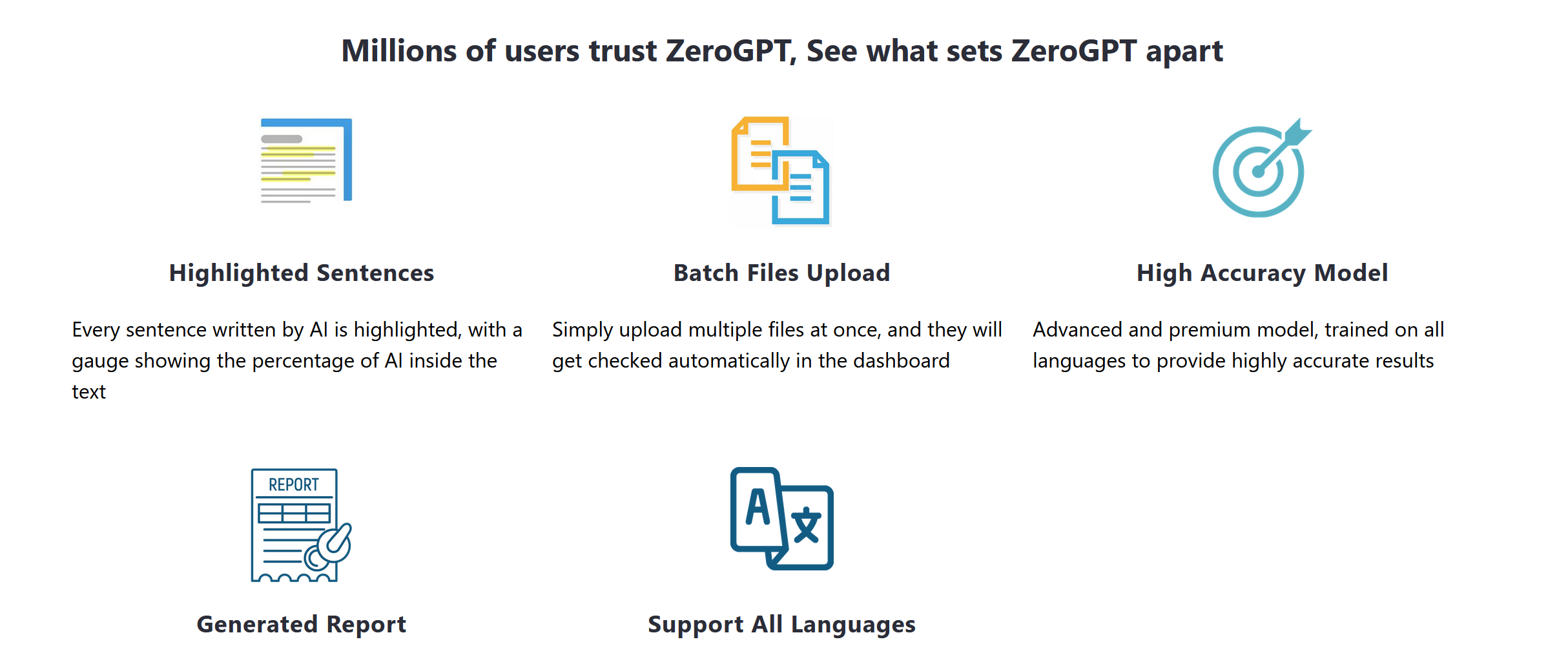
Key features:
- According to ZeroGPT developers, its accuracy reaches 98%. Such high performance was ensured by the analysis of more than 10 million texts and articles written by people and AI.
- The platform uses a unique analysis technology, DeepAnalyse™, created by the ZeroGPT team and successfully tested. The company is constantly working to increase the accuracy of the analysis, which will further reduce the error rate to 1%.
- Based on the results of the check, the system issues its assessment of the material it has checked in two versions: “Your Text is Human written” and “Your Text is AI/GPT Generated.” Additionally, it shows a percentage scale with the generation share and highlights AI-generated suggestions.
- Users can paste text into a window on the service's main page or upload a text document.
- The system provides PDF reports on the results of each inspection and also supports several languages.
ZeroGPT offers 4 tariff plans:
- Free (up to 15,000 characters per check, package of 5 files).
- Pro (up to 100,000 characters per check, package of 50 files) – $7.99 per month.
- Max (up to 100,000 characters per check, package of 75 files) – $18.99 per month.
- Enterprise – the cost is calculated individually and is available upon request.
The indicated prices are valid subject to payment for the year immediately. If you pay monthly, the cost will be higher.
Moreover, the service provides a separate line of API Business Plans:
- Beginner (up to 50,000 characters per check, package of 40 files) – $0.034 per 1000 words.
- Pro (up to 150,000 characters per check, package of 75 files) – $0.049 per 1000 words.
- VIP (up to 500,000 characters per check, package of 150 files) – $0.069 per 1000 words.
Crossplag
Crossplag has access to 300 million documents and 70 billion articles. This helps it effectively recognize AI-generated texts in over 100 languages.
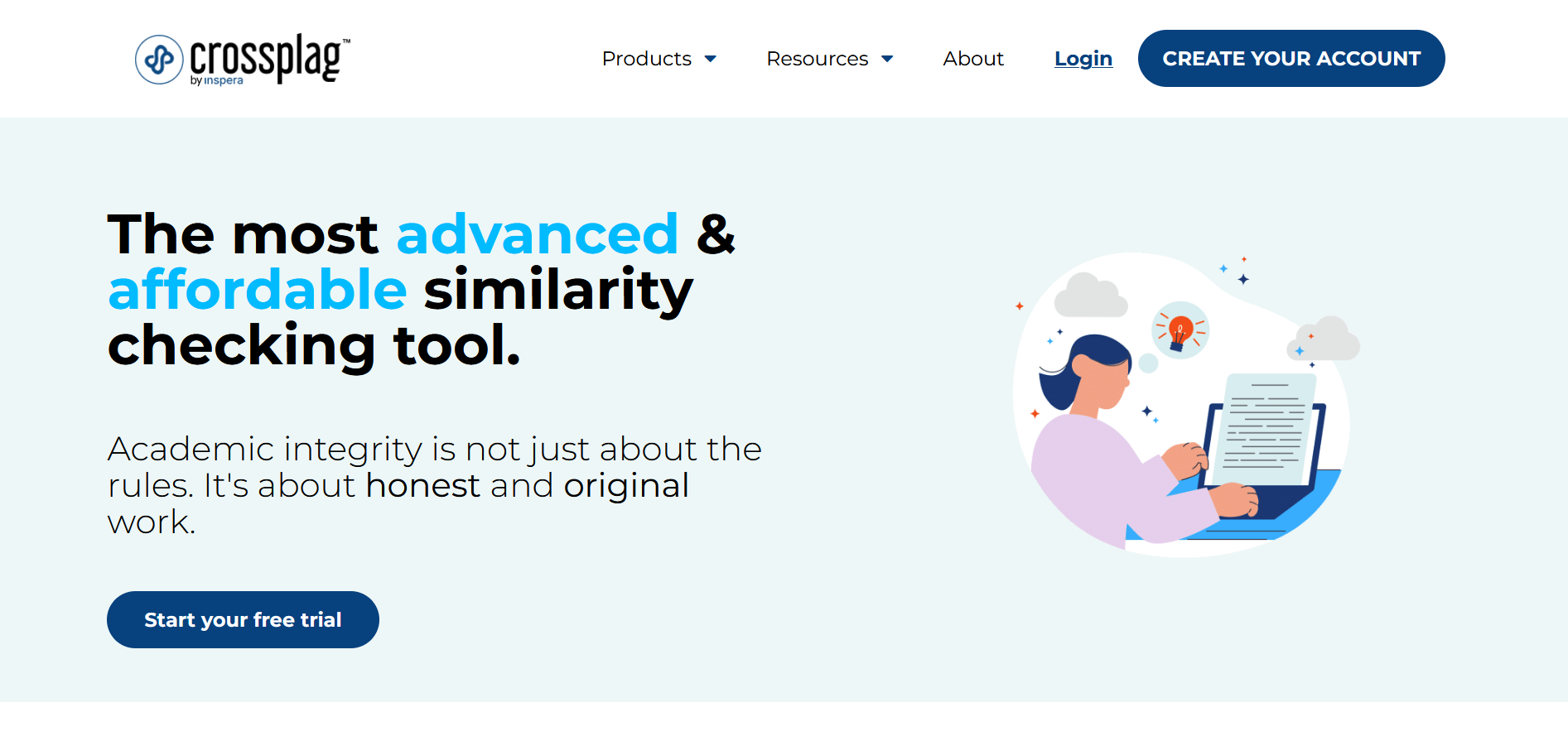
Key features:
- Crossplag uses the latest machine learning and natural language processing technologies to determine the origin of text on any topic in seconds.
- The platform is based on the RoBERTa model, trained on a large dataset from OpenAI with 1.5 billion parameters.
- The service offers a convenient and understandable percentage reliability rating system. It calculates the probability that the author of the content belongs to artificial intelligence.
- Crossplag's algorithms were trained on a robust library of human- and AI-generated text material. This allows it to find patterns that indicate non-human origins.
- A built-in plagiarism detector helps the platform instantly check not only the “humanity” but also the originality of the content.
The AI content detector is one of the tools of the Crossplag service, the main purpose of which is to check texts for plagiarism. There is no separate charge for the detector. You can use it completely free.
However, the platform offers 3 tariff plans:
- Pay as you go (5000 words, 50 credits) – €9.95 per month.
- Bundle (100,000 words, 1000 credits) – €149.95 per month.
- Institution – the cost is calculated individually and is available upon request.
If you need to check texts for plagiarism, you can subscribe to one of them. By the way, upon registration, the user is given 10 credits to test the service before purchasing a subscription.
Writer
The Writer service is rightfully classified as one of the best AI detection software. It is a component of the comprehensive corporate full-stack platform with generative AI called the same name. It assists in the integration of artificial intelligence technologies into diverse business processes.
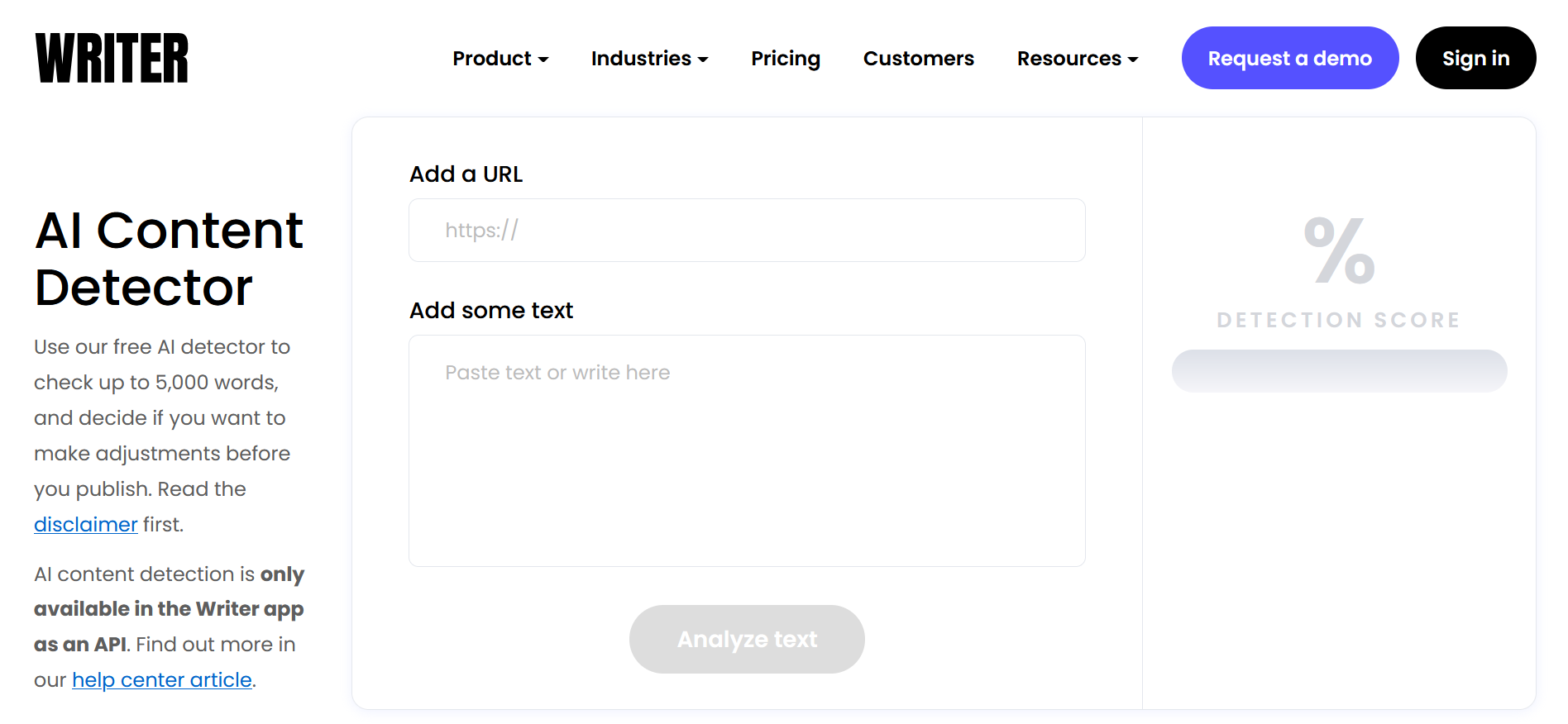
Key features:
- The detector analyzes up to 5000 characters of text in one scan and provides the result as the estimated share of generation in percentage.
- The system's algorithms identify text patterns that resemble those used by generative neural networks.
- The platform seamlessly integrates with third-party systems through API, enabling automatic checking of up to 500,000 characters of text per month.
You can utilize the AI Content Detector for free without the need to register with the “mother” Writer service.
Conclusion
Today, there is quite a large selection of AI detection software available on the internet. All of these systems utilize different analysis algorithms and provide their own verification conditions. Within our selection, there are both completely free open-source tools and professional enterprise-scale platforms. The most affordable paid programs include Copyleaks and ZeroGPT (starting from $7.99 per month), as well as Crossplag (starting from €9.95 per month).
Would you like your employees to receive real-time data on new Facebook leads, and automatically send a welcome email or SMS to users who have responded to your social media ad? All this and more can be implemented using the SaveMyLeads system. Connect the necessary services to your Facebook advertising account and automate data transfer and routine work. Let your employees focus on what really matters, rather than wasting time manually transferring data or sending out template emails.
